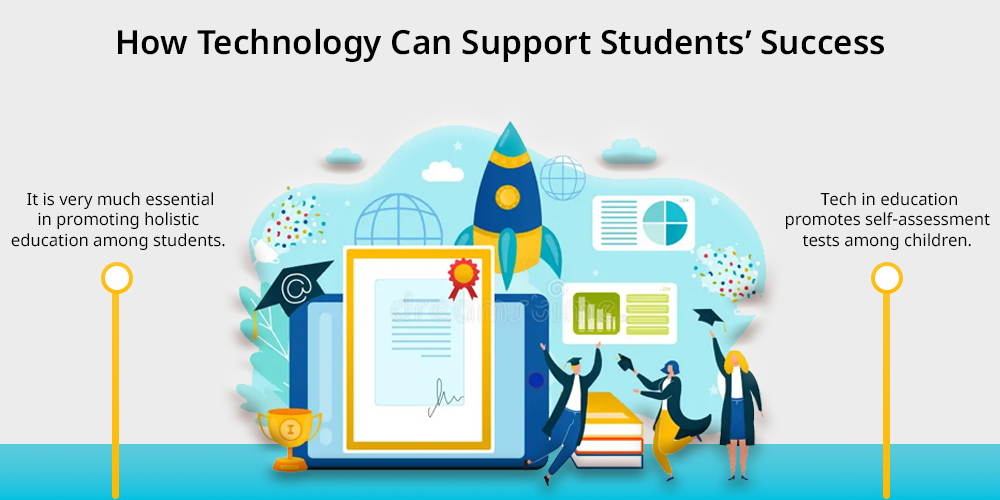
Do you know technology has contributed to a great initiative in the development of education?
Technology is very much essential in promoting holistic education among students. Through various assessments and tailored feedback, students can engage in well-developed learning experiences.
Course evaluations and student participation are important for enhancing the learning environment. This can be achieved by implementing technology in education.
Meeting the changing needs, such as the implementation of AI, remote learning, hybrid learning, and blended learning, schools and higher education institutions need to implement technology to enhance online education and implement these programs.
Through online homeschooling, students become self-assured people. Tech in education promotes self-assessment tests among children; in addition, it provides individualized instruction. Children who spend all of their time on digital devices save time and have more freedom to develop skills.
Contents
The Role of Technology in Education
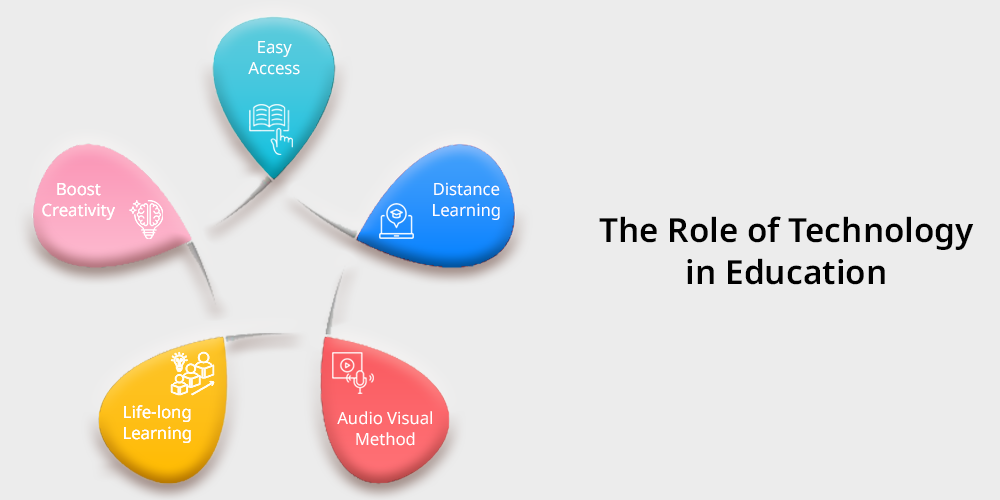
Technology plays an incredible role in developing a child’s pedagogy. It also promotes cognitive development among students .
Technology has the ability to provide better learning opportunities, increased information accessibility, and better technical aspects.
Below, you can check how technology has an educational impact.
- Easy Access: Through the help of technology candidates can easily find resources and access to quality education. Through technology, students can readily access e-books, study guides, sample papers and previous exam questions online. This help students in developing proper knowledge and equal learning opportunities.
- Distance Learning: With the implementation of technology students can study through distance mode. Distance mode of education allows kids to complete their studies without any hindrances and continue pursuing their education from the comfort of their homes. This allows students to focus on their education as well as extracurricular activities or jobs.
- Audio Visual Method: Educational technology allows kids to engage in practical models. Online education contains an audio-visual method that allows kids to develop cognitive skills and enhance their creativity.
The audio-visual method helps students to grab the theoretical concepts more easily with the help of practical settings. This is one of the effective ways of engaging students more different backgrounds. - Life-long Learning: One of the greater advantages of technology in education is it promotes lifelong learning. The availability of online education encourages self-directed learning and extends learning opportunities outside of the traditional classroom. Allow kids and adults to enhance their engagement in classes.
- Boost Creativity: Online education promotes creativity and critical thinking skills. Online education uses technology for fun learning activities that allow one to have a proper understanding and knowledge of current contexts.
Through online learning, students become more engaged and participate in class academics. Through this, student are able to think outside of the box.
Ways Technology Supports Student Success
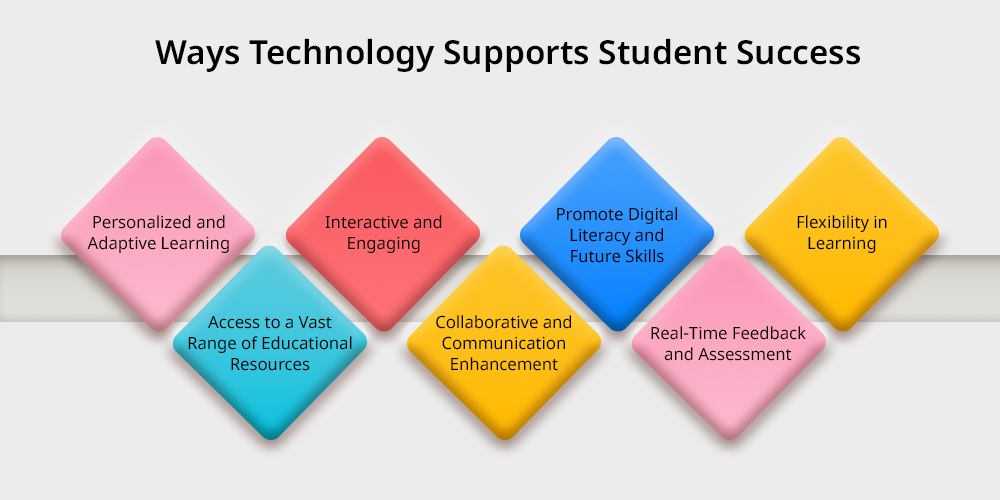
Technology supports education in various ways. It helps students to achieve the learning process more confidently.
Technology helps in encouraging collaboration, boosting engagement, personalizing learning and preparing students for the future career prospects. Below you can check how technology support student success.
1. Personalized and Adaptive Learning:
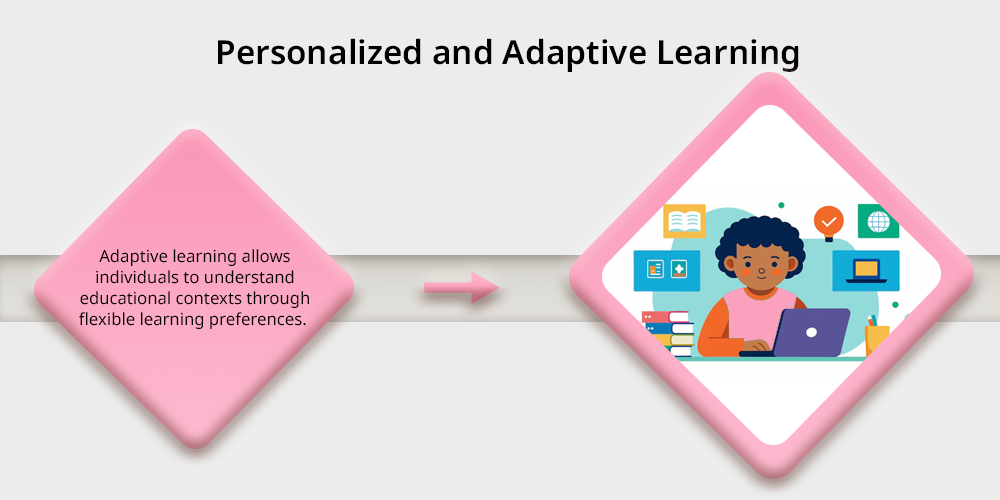
Through technology in education, students access adaptive learning. Adaptive learning allows individuals to understand educational contexts through flexible learning preferences.
Various online platforms or online schools allow kids to continue their learning outcomes through flexible schedules. Through visual platforms, educators can provide personalized education to kids.
2. Access to a Vast Range of Educational Resources:
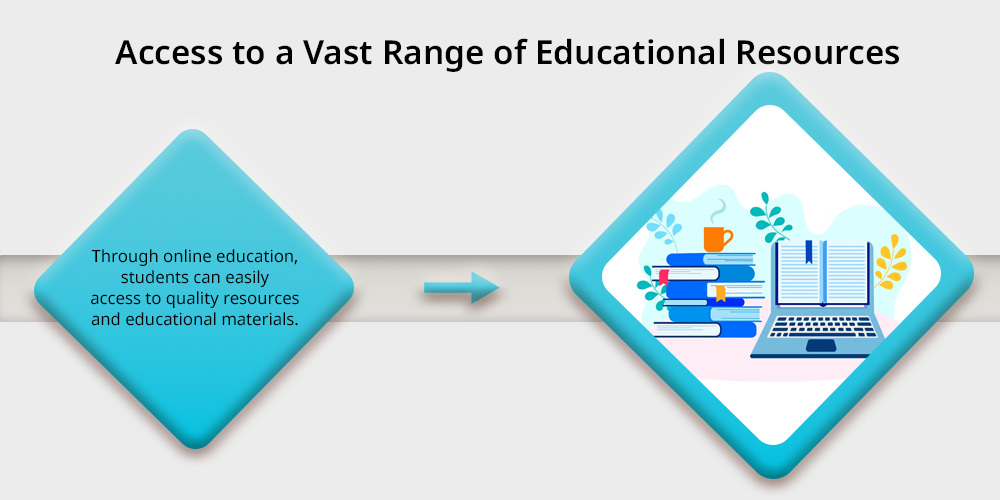
Through online education, students can easily access to quality resources and educational materials. Online education is an open learning platform that allows students to easily grasp the concepts.
Access to a wide range of digital tools helps to accommodate different learning styles, including interactive simulations, educational apps and online courses.
3. Interactive and Engaging:
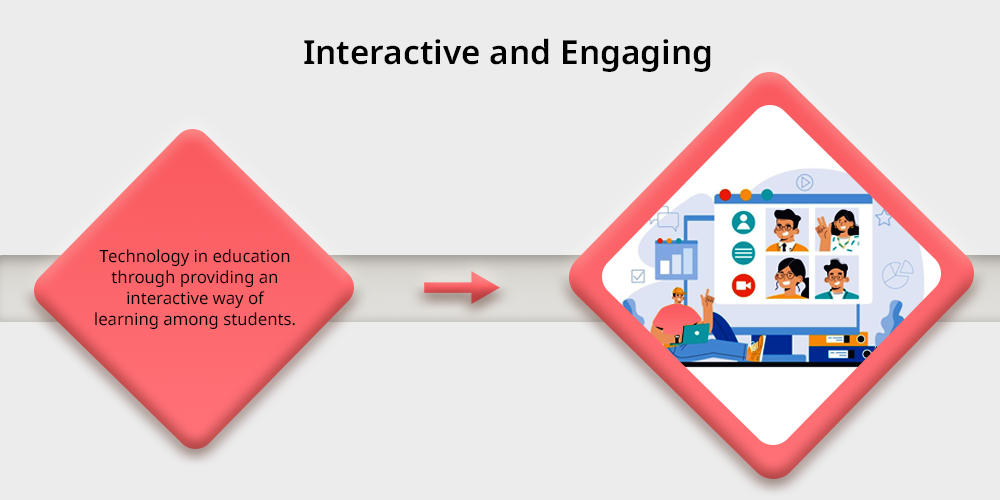
Technology in education through providing an interactive way of learning among students. Technology promotes various fun learning activities at home to enhance their engagement.
Through technology, traditional classrooms are transformed into dynamic education platforms that allow students to participate in virtual learning and interactive activities. Through this, educators can develop more interest among kids to adapt to online learning.
4. Collaborative and Communication Enhancement:
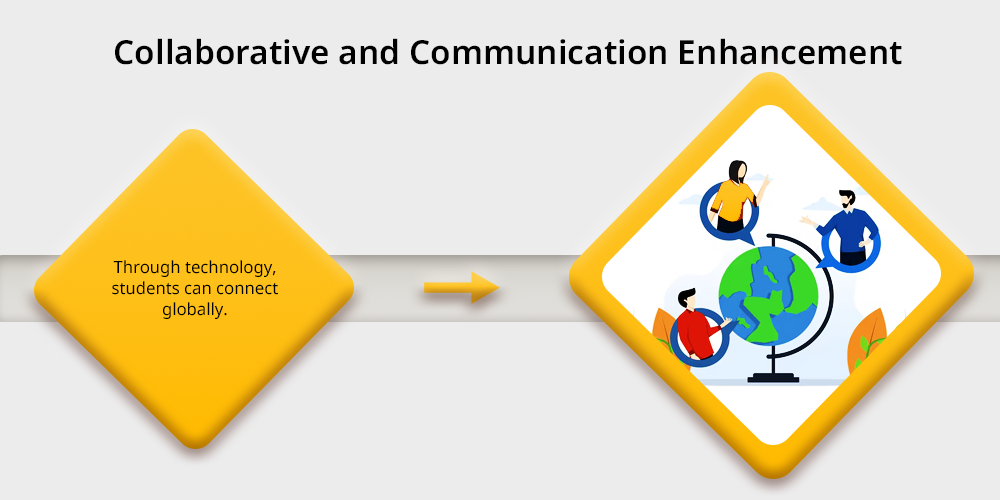
Through technology, students can connect globally. This allows global collaboration among students and peers.
Technology has made student collaboration, communication and knowledge sharing easier by digital platforms such as Google Classroom, Microsoft Teams, Facebook and so on.
5. Promote Digital Literacy and Future Skills:
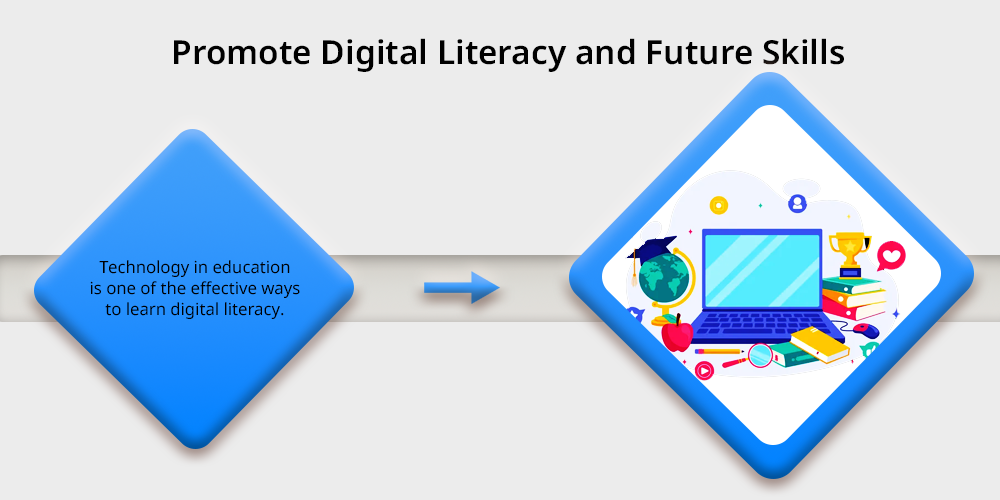
Technology in education is one of the effective ways to learn digital literacy . Digital literacy is the knowledge of technology and technical terminology.
Essential digital skills allow students to acquire productivity through technical tools and online platforms for effectively communicating in digital settings.
Digital literacy is very much essential in promoting holistic development among students and individuals.
6. Real-Time Feedback and Assessment:

One of the efficient benefits of technology in education is that it provides real-time feedback and assessments.
In digital classrooms technology can be used by educators to monitor student progress, pinpoint areas in which students require more help and adjust their lesson plans accordingly.
7. Flexibility in Learning:
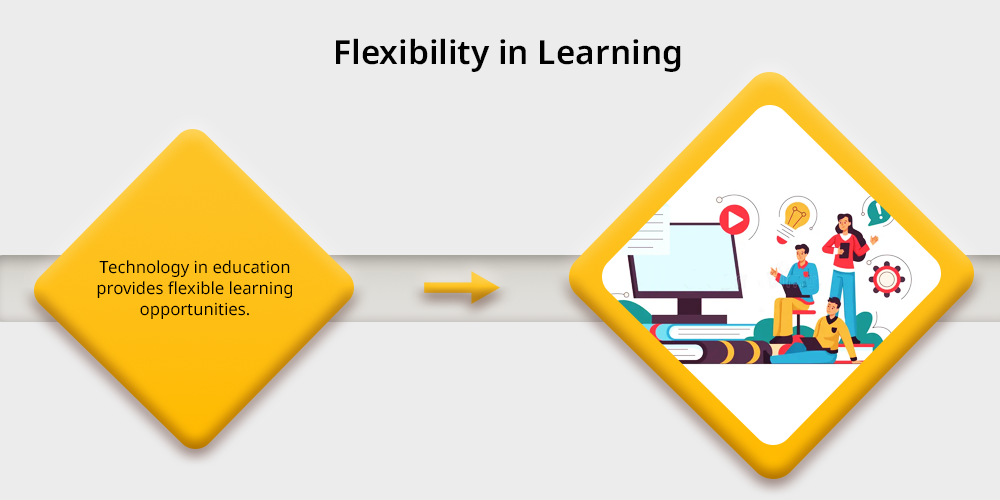
Technology in education provides flexible learning opportunities. Flexible learning gives students the freedom to learn at their own pace this allows them to balance their work life as well as academics.
Virtual learning platform offers flexibility in learning also promotes students engagement and future opportunities.
Overcoming Challenges in Technology-Based Learning
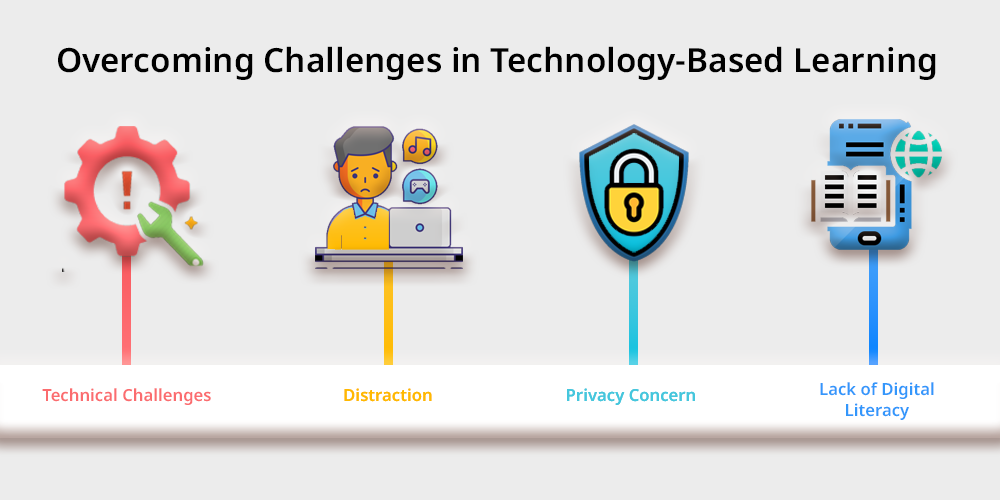
Technology has lots of benefits in education and it promotes students to enhance their learning potential. However, technology in education has lots of challenges due to which it creates hindrances in online education.
In order to overcome challenges it is essential to implement various strategies. Below, you can check the challenges of technology-based learning.
- Technical Challenges: Technical issues are one of the greatest challenges in online education. Internet issues, software issues, technical problems, etc,. are the major issues in online education. These challenges hinder the teaching-learning process and affect the quality of education.
- Distraction: Distraction is one of the major reasons in online education. Children usually get easily distracted by social media, entertainment, games and so on. This makes them less motivated towards education and hinders the learning process. It is essential for kids to develop a sense of ownership in order to overcome these challenges.
- Privacy Concern: Security and privacy concerns are one of the major reasons that hinder the online learning process. Data leaks, privacy practices and security reasons are very important for maintaining a safe and secure atmosphere. It is essential to safeguard student information and data as well as secure online learning platforms.
- Lack of Digital Literacy: Lack of digital literacy is one of the major challenges in implementing tech in education. A lack of digital literacy makes it tough for students to understand technical concepts.
With the lack of technical knowledge causes difficulty in information access, participation in the digital economy, and social engagement. - Lack of Technology: Technology is a game-changer in education, but various students find a lack of proper technology and technical terminology, especially in rural areas. Due to this, they find it difficult to complete their education. This situation can be overcome by implementing proper technology in education as well as using digital platforms.
21K School – Setting Children Up For Success with Technology
21K School offers the best rated online homeschool programmes to transform your child into the most confident human being. They not only offer personalised classes but also organise self-assessment tests for your child.
Their digital only experience helps save time and gives children more flexibility to pursue what they love. Schooling through an Online School saves as many as 1,050 hours per year, translating to 700 days over 16 years of school education by reducing travel time and tuition time.
This flexible learning model at 21K School allows our students to pursue their passion across science, maths, art, music, dance, entrepreneurship, and sports.
This is the perfect platform for developing the evolving skills of your child, leading him/her to follow a successful life.
21K School is the first web 3.0 school that provides flexible online schedules and transcends beyond the confines of the four walls.
This allows you and your child to access classes, workshops and events from anywhere around the world. You will never miss another update even if you are away from your home.
All classroom sessions are recorded and we have both the Gallery View so that the student can see how the rest of the class participated, as well as the Presenter view to see what the teacher shared.
The platform is also connected to our personalised learning engine, whose AI helps students and parents understand classroom performance and learning journey in a whole new way.
Conclusion
Because it facilitates collaboration, offers individualized learning experiences, and advances digital literacy, technology in education is essential to improve student success.
Even though there are certain difficulties like technical problems, diversions, privacy issues and different levels of digital literacy, the advantages of incorporating technology into the classroom greatly exceed these drawbacks.
A more dynamic, adaptable, and successful learning environment that equips students for opportunities and challenges in the future can be established by educators and institutions through the adoption of cutting-edge teaching tools and techniques.
Technology also helps in maintaining time and allows for utilizing technology in the classroom, fosters students’ personal development and lifelong learning in addition to academic success.


